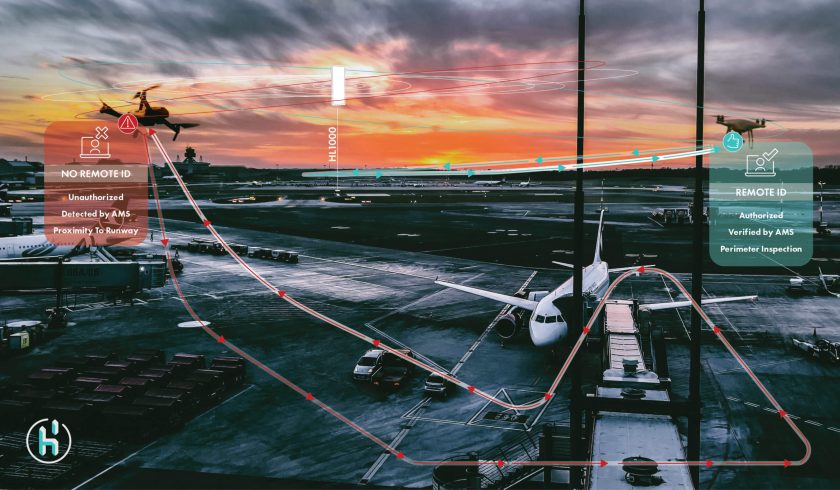Sensor solutions company Hidden Level has developed drone monitoring technology designed to keep up with the rapid technology advancements to drones such as Remote Identification, says a company press release.
Hidden Level’s Airspace Monitoring Service (AMS) technology uses a local network of passive RF sensors installed on buildings, rooftops and cell towers, which detects the movements of drone aircraft in the area. That allows it to track drones even without a RID broadcast, resolving the first gap.
The Hidden Level AMS also checks and validates RID signals by correlating fine angle estimates from its sensors on the received RID broadcast messages with the drone position information included in the messages.
The Federal Aviation Administration (FAA) has passed legislation that requires all new unmanned aircraft to transmit identification and location information. Hidden Level’s Airspace Monitoring Service (AMS) technology is designed to track, monitor, and validate drones whether or not they comply with the new FAA rules. The new regulations are in response to the explosive growth of unmanned aircraft systems, or drones, since 2013. The FAA reported over 865,000 registered drones in May 2022 and estimates that number will grow to 1.4 million by 2024.
To prevent collisions with passenger airplanes and other aircraft, the FAA is mandating all drones operating in U.S. airspace have Remote Identification (RID) capability. Remote ID provides agencies like the FAA, law enforcement, and other federal agencies a greater situational awareness to be able to identify when a drone appears to be flying in an unsafe manner or where it is not allowed to fly. Remote ID also lays the foundation of the safety and security groundwork needed for more complex drone operations. The regulations require all drones made or sold in the United States after December 2022 support RID, and that all drone pilots (including those who fly for fun, business, or public safety) must register and operate their drone in accordance with the final rule on remote ID beginning September 16, 2023.
Jeff Cole, CEO and co-founder of Hidden Level said: “Our AMS not only receives RID signaling in its coverage area, but also verifies it, addressing two significant gaps in the RID system.”
The Hidden Level AMS is a cloud-based scalable solution that utilizes a local network of passive RF drone detection sensors, much like a cellular network, that is owned, operated, and maintained by Hidden Level. The sensors, installed on buildings, rooftops and cell towers, provide real-time location data on drone aircraft. Clients receive streaming AMS data that integrates into a variety of common security platforms.
For more information visit:




